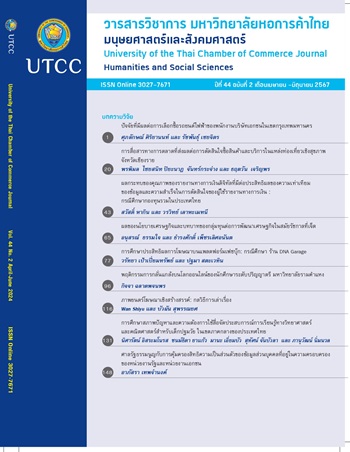The impacts of economic policies and the role of capitalists in economic development during the Reign of King Rama VII
Main Article Content
Abstract
This qualitative research examined the role of economic policy and capitalism development during political and economic transitions of King Prajadhipok (Rama VII) of Thailand. Socioeconomic and political backgrounds, development of capitalism by different groups from 1925 to 1934, and relevant economic policies were studied. Capital accumulation and growth based on a patronage system. Economic Policies have fostered the semi-feudal capitalist economic system to be able to continuously operate during the reign of King Rama VII. Several policies have significantly coherence and affected to various policies. Almost all capitalist groups before the Siamese revolution of 1932 accumulated capital through relationships with state power during the era of absolute monarchy. Rent seeking and deadweight loss impacted social welfare.
Stakeholders with significant roles in investment and trade developed from formerly patronized state capitalist and Royal Treasury groups, Thai Chinese and Western businesspeople. Europeans and Americans were increasingly present after the Bowring Treaty. These capitalist groups invested in new technology and exploited natural resources. Most from 1925 to 1934 were traders lacking power to change economic fundamentals in Thailand. Industrial development slowed due to absence of strong internal industrial capital
Article Details

This work is licensed under a Creative Commons Attribution-NonCommercial-NoDerivatives 4.0 International License.
ลิขสิทธิ์ของบทความ
ผลงานที่ได้รับการตีพิมพ์ถือเป็นลิขสิทธิ์ของมหาวิทยาลัยหอการค้าไทย ห้ามมิให้นำเนื้อหา ทัศนะ หรือข้อคิดเห็นใด ๆ ของผลงานไปทำซ้ำ ดัดแปลง หรือเผยแพร่ ไม่ว่าทั้งหมดหรือบางส่วนโดยไม่ได้รับอนุญาตเป็นลายลักษณ์อักษรจากมหาวิทยาลัยหอการค้าไทยก่อน
References
Bualek, P. (2002). The characteristics of Thai capitalists between 2457-2482: The lesson from prosperity to tragedy. Panthakij. [in Thai]
Ingram, J. C. (1955). Economic change in Thailand since 1850. Standford University Press.
Maneepruek, C. (2007). Economic policy of King Prajadhipok government. King Prajadhipok's Institute. [in Thai]
Mead, Kullada Kesboonchoo. (2004). The rise and decline of Thai absolutism. Routledge.
Nadsupa, C., & Prasardsanaset, S. (2014). Thai economic system 2453-2475. In C. Nadsupa, & S. Manarungsun (Eds.). Thailand economic history until 2484. Thammasat University Press. [in Thai]
Ouyyanont, P. (2015). The Thai economy during the Seventh Reign: Maintaining stability and laying the foundations. Judpim Kubplong Project. [in Thai]
Phongpaijit, P., & Baker, C. (2003). Thailand politics and economy in Bangkok era. Silkworms. [in Thai]
Suehiro, A. (1996). Capital accumulation in Thailand, 1855-1985. Silkworm Books. [in Thai]
Tamajai, A. (2005). Pridi Banomyong: Revolutionary stateman. Bangkokbiznews. [in Thai]
Tamajai, A. (2009). Seedings of economics thoughts in Siam. Journal of Economics and Business Administration, 5(2), 5-16. [in Thai]
Tamajai, A. (2016). Thailand economy. Rangsit University Press. [in Thai]
Tamajai, A., & Petchlertanan, T. (2020). Capitalism system development in Siam. Rangsit University Press. [in Thai]


